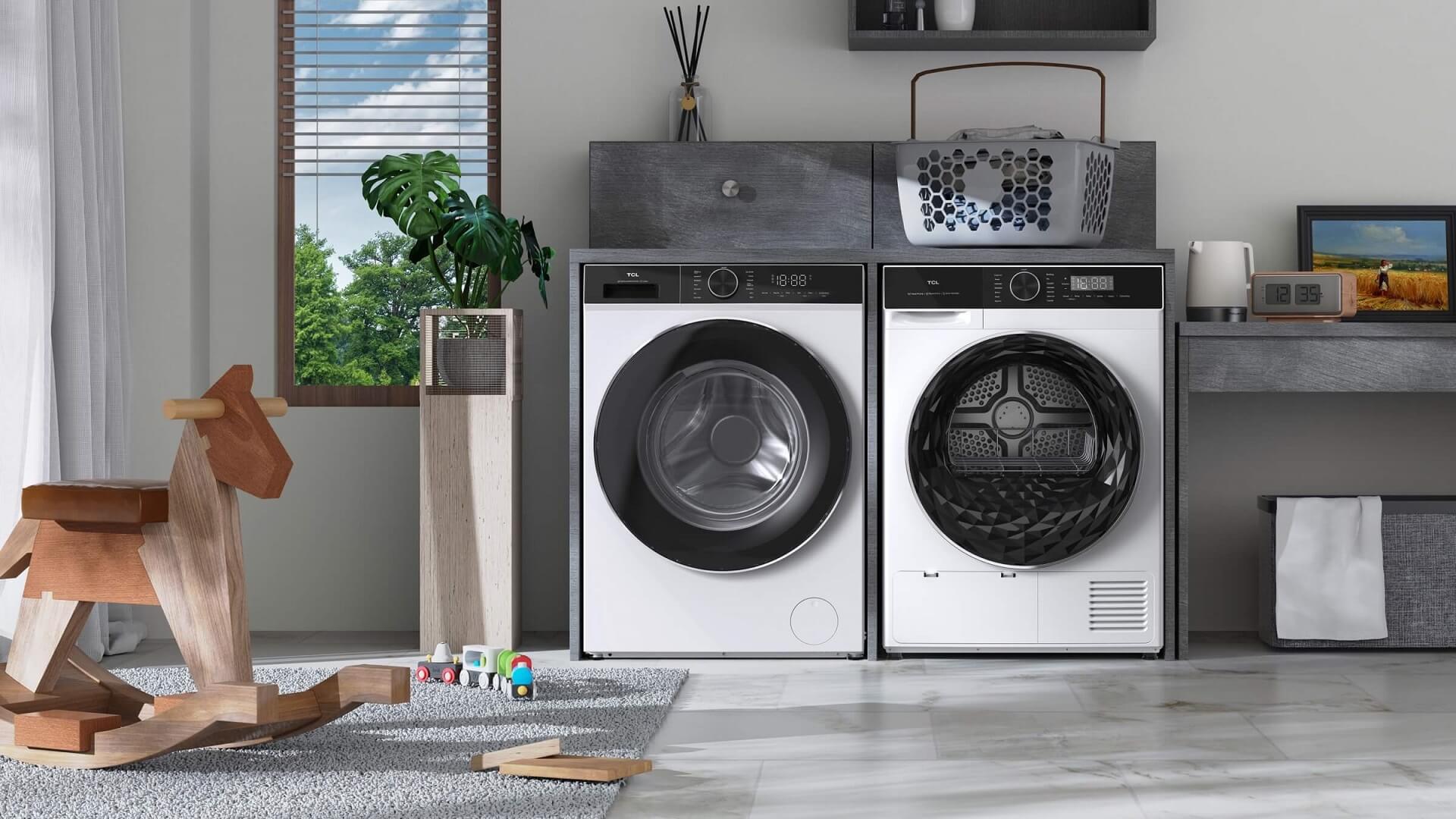How To Drain The Water Out Of A Washing Machine
How To Drain The Water Out Of A Washing Machine

Introduction
When a washing machine won't drain water, it can be frustrating. In this article, we'll discuss some common reasons why washing machines won't drain water and how to drain a washing machine manually. Additionally, we'll touch on the advanced features offered by TCL washing machines.
Why Won't My Washing Machine Drain Water?
There are several common reasons why a washing machine won't drain water.
- First, it could be due to a clog in the rubber drain tube leading from the washing machine to the drain standpipe.
- Second, material obstructing the water pump filter or impellers can also cause the issue.
- Third, a mechanical failure of the water pump, a loose or broken drive belt, or a faulty lid switch can prevent the machine from draining properly.
- Fourth, a kink or clog in the drain hose could be interfering with water flow and preventing the machine from draining properly.
- Finally, a defective drain pump filter or a drain pump that has stopped working altogether can also cause the issue.
To diagnose the problem, we recommend turning off the power to the washer, disconnecting the hose (have a bucket ready to catch any water), and checking the hose for damage or obstructions.
Related: The Top 7 Problems With Washing Machines And Their Solutions
How to Drain a Washing Machine Manually
If your washing machine has stopped draining water, it may be necessary to drain it manually. You can manually drain it by bailing it out with a bucket or you can use the drain hose:
Bail it out with a bucket
- Turn off the power to the washing machine by unplugging it from the wall outlet or turning off the circuit breaker that controls the washer.
- Open the lid of the washing machine and use a cup or scoop to remove as much water as possible from the tub. Pour the water into a bucket or other container.
- Once you have removed as much water as possible, use a small container, such as a measuring cup, to scoop out any remaining water from the tub.
- As you scoop out the water, pour it into the bucket or other container.
- Once all the water has been removed from the tub, you can check for any obstructions that may be causing the machine to not drain properly.
- If you find any obstructions, such as lint or other debris, remove them carefully.
- Once you have removed any obstructions, replace the lid of the washing machine and turn the power back on.
However, we need to address the potential cons of this method, such as being time-consuming, labor-intensive, and limited in effectiveness. Additionally, there is a risk of spills or splashes, which could damage the surrounding area or cause injury. Therefore, this method should only be used as a temporary solution, and if the problem persists, a repair technician should be called to diagnose and fix the issue.
Read more: How To Clean Your Washing Machine In 4 Easy Steps

Drain it with a hose
- Turn off the power to the washer. This can usually be done by unplugging it from the wall outlet or turning off the circuit breaker that controls the washer.
- Locate the drainage hose. This is usually a flexible hose located at the back of the machine, near the bottom. It may be connected to a standpipe, a sink or a bucket.
- If the hose is connected to a standpipe, remove the hose from the standpipe. Be sure to have a bucket or other container ready to catch any water that may drain out.
- If the hose is connected to a sink or other drainage point, disconnect the hose from the sink and place it in a bucket or other container.
- Once the hose is in the bucket or other container, use a pair of pliers or a clamp to pinch the hose closed. This will prevent water from flowing back into the machine while you work.
- Remove the cap from the end of the drainage hose and allow the water to drain out into the container. If the water does not drain out quickly, there may be a blockage in the hose or pump. Check for any obstructions and remove them if possible.
- Once all the water has drained out, replace the cap on the end of the hose and remove the clamp or pliers.
- Reconnect the drainage hose to the standpipe or sink and turn the power back on to the washer.
By following these steps, you should be able to drain your washing machine manually and get it running again. If you continue to experience problems with the machine not draining properly, you may need to call a repair technician to diagnose and fix the problem.
Also read: How To Install A Washing Machine In 8 Steps
TCL Washing Machines
TCL washing machines offer various advanced features such as Steam Wash, Digital Inverter Motor, Air Refresh, Spray Wash, and Drum Clean.
These machines provide superior cleaning performance, convenience, and efficiency.
- The Steam Wash feature uses steam to remove tough stains, allergens, and odors.
- The Digital Inverter Motor ensures powerful yet quiet operation, energy efficiency, and durability.
- The Air Refresh feature eliminates bad odors from clothes, while the Spray Wash ensures deep cleaning.
- Additionally, the Drum Clean function keeps the drum clean and hygienic.
Overall, TCL washing machines are an excellent choice for those who want advanced features and superior cleaning performance.
Conclusion
If your washing machine isn't draining, it's important to diagnose the problem and fix it to avoid further issues. Manual draining can be a temporary solution, but it's important to address the underlying problem. Check out the TCL washing machines which offer advanced features such as Steam Wash, Digital Inverter Motor, Air Refresh, Spray Wash, and Drum Clean, providing superior cleaning performance, convenience, and efficiency.
Connect with us on Facebook, Instagram, Twitter& YouTube for the latest updates on our TCL products and events.

QLED vs. UHD: Which TV Technology is Best?
2025-04-09

What AC Type is Used in Offices?
2024-12-19

How to Connect Universal Remote to TV?
2024-09-27

YouTube on TV Not Working, How to Fix?
2024-09-20

How to Watch Apple TV on Smart TV
2024-09-20

Discover the Best Washing Machines for 2024
2024-09-12

How to Measure a TV Screen for Perfect Fit?
2024-08-16

How to Clean Air Conditioner Drain Line?
2024-08-01

What is a backlight in an LED TV?
2024-06-18

How To Remove Lint From Clothes Washing Tips
2024-05-24

How Does The Refrigeration Cycle Work?
2024-05-10

How Does VPN Work On Smart TV
2024-05-10

How to Watch Free Live TV on Android TV
2024-05-06

How to Reset Your Air Conditioning Unit
2024-04-25

How to Open A Locked Washing Machine Door
2024-04-10

How To Get Disney Plus On TV: A Easy Guide
2024-04-10

Set Up Your OK Google Device On Your TV
2024-04-08

How To Adjust Your TV Picture to Fit Screen
2024-04-03

How To Convert Your LED TV To A Smart TV
2024-03-01

Tablet Vs Laptop – Which Should You Buy?
2023-11-24

How To Play Games On Smart TV
2023-11-16

How To Level A Washing Machine in Easy Steps
2023-11-11

How To Dispose Of An Old Refrigerator Safely
2023-10-29

How to Mount a TV on the Wall in Easy Steps
2023-10-14

Why Is My AC Not Blowing Cold Air? Easy Fix
2023-09-29

How To Wash Shoes In The Washing Machine
2023-09-28

How To Clean Your TV Screen In 6 Easy Steps
2023-09-26

3 Easy Methods on How To Reset your Tablet
2023-09-14

Dolby Digital Vs DTS: What's The Difference
2023-08-26

Washing Machine Capacity And Load Size Guide
2023-07-26

Ac Leaking Water? Here's How You Can Fix It!
2023-07-22

How To Take Care of a Cracked Phone Screen
2023-07-18

Who Invented Television: History of TV
2023-06-28

10 Smart Tips For More Organized Fridge
2023-06-16

Top 5 Best Browsers for Android TV
2023-05-20

How to Recover Deleted Photos on Android
2023-05-18

What Are the Big Changes for TCL TV in 2022?
2022-09-08

How TCL Smart TVs Enhance Your Life?
2022-08-10

Connection Guide For Your TCL SmartV TV
2021-03-17

Buying a TV? Which TV Should You Buy?
2021-03-17

Which Size TCL TV Is Best for You? | TCL UAE
2021-03-17

QLED v.s. OLED: Which one is better?
2021-03-17
Copyright © 2025 TCL. All Rights Reserved.
This site uses cookies to analyse site traffic, improve your experience and personalize ads or other contents. By clicking Accept or continuing to browse the site, you are agree to our use of cookies. See our Cookies Policy here. Learn more

































































































.jpg?t=1702449223212&w=592)








































































































